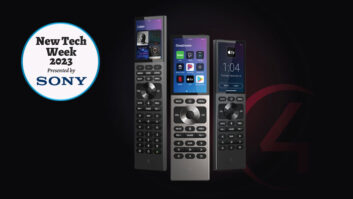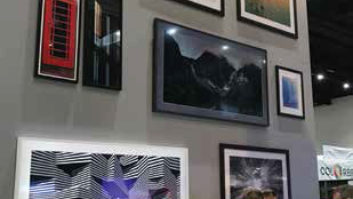Finding Interconnectivity Technologies to Simplify Our Complex Systems

Anthony Grimani ([email protected]) is president of Performance Media Industries, with offices in Novato and San Anselmo, CA.
One of the biggest challenges facing our industry is finding a way to simplify connectivity and control for the sophisticated systems that we design and install. Operating even basic systems can be so complicated that folks choose substandard products, like home-theatersin- a-box, just to make life easier. Even highend systems can suffer poor performance because the configurations and system set-ups aren’t correctly integrating and operating. I have repeatedly come across audio systems from $100,000 upwards that end up playing only 4-channel Dolby ProLogic audio (downmixed from a glorious 7.1-channel Dolby TrueHD track) just because a flag in the HMDI signal feed was set wrong by the matrix switching device.
So, for custom integrators, the real work right now is in developing and implementing smarter and more robust connectivity and user interfaces.
In some cases we’re talking about finding ways to make the dreaded HDMI pipeline work better. Of particular interest are the technology and products of Silicon Image. These guys make chipsets for several functions of connectivity, and they are very innovative. One of their initiatives is called InstaPort. It allows super-fast switching of HDMI sources. They essentially keep all the HDMI feeds active at the input side of the switching circuit. This eliminates the handshaking and signal arbitration time that keeps us waiting for seemingly interminable periods. InstaPort technology also offers an upgrade called InstaPrevue that allows a picture-in-picture preview of the signals feeding into the products. Another connectivity innovation is MHL, Mobile High Definition Link, which provides high def surround sound AV interface and connectivity for mobile devices right into the AV system through a simple HDMI-like cable, which also powers the device. For those systems where wiring an HDMI link to the TV just isn’t possible or convenient, Silicon Image developed chipsets for its WirelessHD standard– running wireless HD signals at 60 GHz from a source switching device to the display device.

The Altec Lansing LIVE 5000 Wi-Fi speaker is one of several wireless AV connectivity initiatives that leverage the ubiquitous adoption of Wi-Fi in the residential environment to feed audio and video signals from Wi-Fi enabled devices.
Airplay and Wi-Fi
Also of interest is a series of wireless AV connectivity initiatives. Some of these leverage the ubiquitous adoption of Wi-Fi in the residential environment to feed audio and video signals from Wi-Fi-enabled devices. Apple’s AirPlay is one such technology that has been growing in popularity for a while. It works well for simple applications involving the distribution of one source to one destination. Altec Lansing LIVE goes even further by offering multi-room and multi-user functionalities. It is currently implemented in the LIVE 5000 Wi-Fi speaker. Further up the ladder is FireCast by Blackfire Research, which supports full HD audio and video, multiple sources and multiple destinations, with accurate signal synchronization, low-latency delay, and powerful signal error correction to get around the usual radio frequency hazards. The demo at CES was very compelling and worked flawlessly within the totally saturated wireless environment of the exhibit hall.
All of these technologies that ride on the Wi-Fi standard are of interest to us in the custom residential space. To make them work properly, you need to provide your client base with the right networking schemes–even enterprise grade level–so that they are always on and always right.
I recommend looking for products that incorporate technologies and chipsets that improve today’s connected lifestyles. They will make you look better, please your clients, and improve the experience of navigating and controlling sophisticated high-end AV systems. Leveraged correctly, these technologies offer an opportunity to get through your work faster. If getting a signal hop to happen with wires is too costly and time-consuming for the client’s budget, then try a wireless solution.
Of course, be prepared to disclose that wireless can be subject to interferences. If it is being chosen in place of actual wires to save time or money, then some of the risk should be on the homeowner, too. Why should you be left troubleshooting the flaky and inconsistent behavior of wireless systems when the failures are only occasional and can’t be reproduced or debugged?
Now that we have a quasi-universal adoption of HD video and multichannel audio content, we are in an era of improved connectivity, with simplified interfacing and control along with reliability. Keep your eyes peeled for the products and vendors that are focusing their energy on reliable interconnectivity, and pick their products and technologies to keep you out of trouble and margin loss.
Chase Walton contributed to this column.







